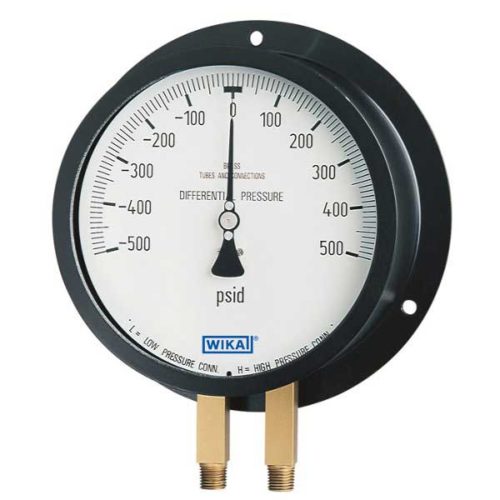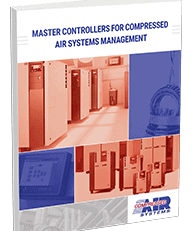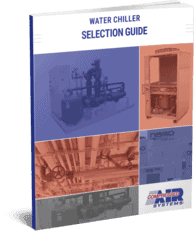The Role of Differential Pressure Gauges in Maintaining Air Quality
What Is a Differential Pressure Gauge?
 Differential pressure—also referred to as DP or ∆p—describes the difference in pressure between two specified points. In process systems, unexpected fluctuations in this value can mean a component needs maintenance, repair, or replacement. For this reason, knowing and understanding current DP levels is essential to ensuring equipment remains in proper working order and operations proceed smoothly.
Differential pressure—also referred to as DP or ∆p—describes the difference in pressure between two specified points. In process systems, unexpected fluctuations in this value can mean a component needs maintenance, repair, or replacement. For this reason, knowing and understanding current DP levels is essential to ensuring equipment remains in proper working order and operations proceed smoothly.
One of the primary tools used for this purpose is differential pressure gauges—also known as differential pressure indicators. These instruments are designed specifically to measure the difference in pressure between two pressure points or connections within a system and provide a visual indication of the results.
Monitoring Air Filter Status Using a Differential Pressure Gauge
The filter is a key component of many compressed air systems. It removes contaminants from air coming into the system to ensure the air exiting the system is clean and safe for use. Its function results in a natural difference in pressure between the inlet and outlet sides. However, as it becomes clogged over time, the differential pressure increases.
System operators can use a differential pressure gauge to monitor this change and determine if and when their filter system has reached the point where it must be replaced. There are many benefits to using this filter monitoring method over others, such as helping operators remain aware of the current status of their filter and encouraging operators to replace filters once they exceed the manufacturer-recommended operating life.
Common Misunderstandings About Differential Pressure Gauges
Differential pressure gauges are often fitted to the filter housings of compressed air systems to facilitate filter status monitoring operations. Despite their ubiquity, there are many misunderstandings about them. Below, we debunk some of the most common myths.
Myth 1: Differential pressure is an indication of air quality. Therefore, a DP gauge is an air quality indicator.
Fact: Filters are used to remove contaminants from the air flowing into compressed air systems. Differential pressure is directly related to the condition of the filter element (i.e., more contamination buildup means more differential pressure between the inlet and outlet sides). However, it is not directly related to the quality of the outgoing air (i.e., high or low differential does not mean more or less contaminants in the outgoing air).
Myth 2: My filter has a differential pressure gauge to indicate when I should change my filter element.
Fact: Compressed air filters are often fitted with a DP monitor or indicator. However, these elements are not considered true DP gauges; they are typically less accurate (±25%) and uncalibrated. As such, they should only be used as a premature blockage indicator rather than a service indicator.
Myth 3: Compressed air filter elements should only be changed when the differential pressure increases.
Fact: In compressed air systems, differential pressure is a measurement of pressure loss. The air compressor must often operate at higher pressures or for long periods of time to overcome differences in pressure, which can show fluctuations in differential pressure regardless of the condition of the filter element. In addition, any holes or tears in the filter would prevent the differential pressure from registering a change, even if the filter were clogged.
Differential Pressure Gauges: Keeping Your Air Quality in Check
Differential pressure gauges are invaluable tools for monitoring air filter status, which, in turn, is essential to ensuring a compressed air system maintains high air quality standards. To learn more about compressed air filters and other system elements, turn to the experts at Compressed Air Systems.
Our eBook, How to Properly Maintain Compressed Air Filter Elements, provides a comprehensive overview of compressed air filters and how and why to maintain them.









